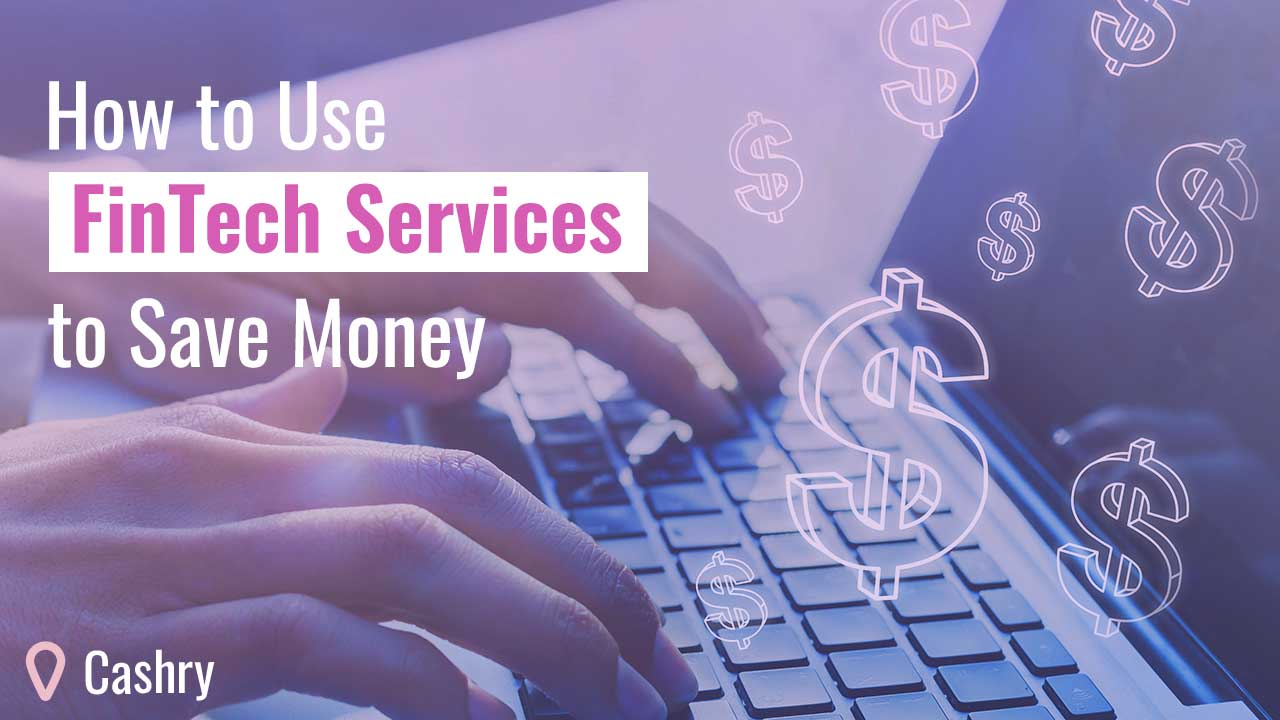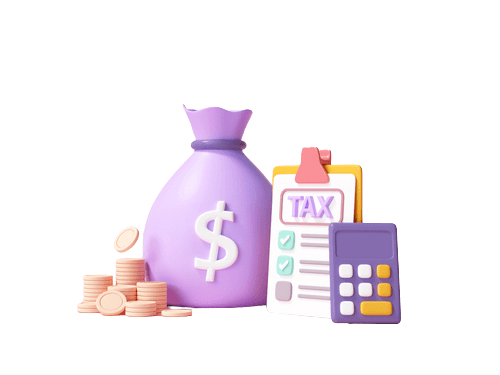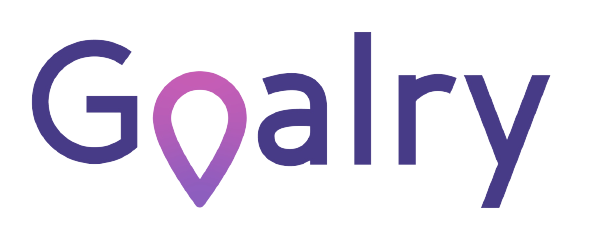How to Use FinTech Services to Save Money

“FinTech” is a rather broad term. The word itself is a combination of “finance” and “technology,” which pretty much sums up what it means. Almost any combination of finance and technology can fall under the basic umbrella of “FinTech services”. Particularly those which automate or otherwise simplify some aspect of personal or business finance.
It’s a mistake, however, to think of FinTech services as technology, apps, or software that somehow takes over your finances for you. Robot-advisors make it much easier to manage your investments and retirement funds, for instance, but they do so based on your parameters, preferences, and other input.
How To Save Money Using FinTech Services
If you take the example of your bank or credit union. It probably offers a smartphone app that lets you transfer money or deposit checks from wherever you happen to be, but you’re still the one controlling the transfers and deposits. Saying that FinTech services handle your money for you is like saying your fitness tracker burns calories on your behalf – it’s missing the point.
What FinTech can do, however, is dramatically simplify and streamline your ability to take more effective control of your personal or small business finances. The right app or service can reduce the time and effort it takes to implement your decisions. But it can also help you making money decisions more efficient and potentially more powerful. If barter is walking and paper money is riding horseback, FinTech is high-speed rail. You still choose where you’re going and how you’d like to get there; FinTech (properly applied) makes it faster and easier to accomplish.
As we said at the outset, no app nor any computer program can or should ever take over your own financial decision-making. What the good ones do best, rather, is to automate and regulate repetitive or tedious operations based on your choices. Here are a few examples…
1. Micro-Saving
If you know you need to save, but lack either the funds or attention span, the right app might be able to help you get started. The most common sort of micro-saving would be a debit card that automatically rounds your purchases up to the nearest dollar (or nearest $5, or nearest $10 – remember, it’s all still up to you) and deposits the difference into savings every time you use the card.
So, for example, you stop for coffee and a bagel and pay with your card. It’s $5.43 after tax; your card calls it $6.00 and 57 cents goes into savings. The idea is that you don’t notice a big difference on any one purchase, but after a few months, you have $50 or $100 set aside and can build from there.
2. Budgeting and Saving
One of the hardest parts of budgeting or tracking our own spending is taking the time to sit down once or twice a week and sort everything into the appropriate categories. Ideally, we compare where we are at that point in the month to where we thought we’d be – or at least where we wanted to be.

If you’re like I was when I first started, you find yourself staring at the last few receipts trying to remember where you might have spent $18.17 two days ago. Or you’re trying to figure out why you have no record of over $100 cash you withdrew last week. You have $2 left in your wallet and you maybe bought lunch on Wednesday, but other than that…?
Can You Imagine..?
Now imagine that each time you make a purchase, you pay with your phone and it automatically categorizes the spending based on categories you’ve selected or those automatically generated by the app. Maybe it’s tied in to your debt card, or you choose to enter the amount manually each time you pay with cash (we did that with our calorie counters and paper checkbooks for years). Or the app might make suggestions about saving money throughout the week, or alerts you when a payment for something will be due in a few days. Maybe it alerts you when a balance is low so you don’t accidentally overdraft your account. Then, each weekend, you pull up a report, make any minor adjustments you see fit, then get on with your life.
When you know exactly where every dollar has gone, it’s easier to keep an accurate and effective budget, and to plan for next month. It takes less time and energy to make important spending adjustments based on the information you see. You want some free financial advice? “Knowledge is power.” We tell ourselves we don’t have an effective personal or household budget because we know how we’re using our resources, or because we don’t want someone else telling us what do with our own money. But those are excuses – if we knew, we’d be doing a better job of it!
Now Let’s Budget
Budgets make our own priorities clear to us. Budgets give us the power to decide what’s really important to us moving forward. The easier it is to budget accurately, including keeping track of our spending and saving habits, the more control we have over tomorrow.
3. Robot-Advising and Other Investment Apps
One of the most fascinating and varied fields in FinTech services is the world of investment and long-term savings.
Now, before you decide this isn’t for you and skim further down, consider the reality that someday you’re probably going to want to retire. Statistically speaking, you’re likely to have more “golden years” than any previous generation, during which you’ll probably want to live in your own home, eat food of your own choosing, and otherwise provide for yourself for as long as possible.
Robot-Advisors make it easier for you to manage your investments and to invest in the first place (see “Micro-Saving” above). Many variations include the option of reaching out for personal, human assistance, but the majority of things can be automated for you once you’ve responded to initial questions setting things like how much you’re willing to invest (or how much you’d like to have when you retire), risk preferences (higher risk means larger potential gains but also higher potential losses), and other parameters.
In many cases, you can have as much or as little direct control as you choose. Drive your investment vehicles using stick shift each day, analyzing the numbers and making the turns. Or you can also decide to hop on the subway version and read the paper until it announces your stop.
Let’s assume, however, that the whole point is that you don’t want to try to figure it all out yourself. Maybe that’s part of why you haven’t done much with your own investments in the first place beyond whatever program your employer recommends and maybe a small savings account. You set up a robot-advisor app on your phone. It asks you a few starting questions to get a feel for what you want, then it leaves you alone until you check in.
For Instance
Let’s say I’m a medium-risk guy, so I commit $50 a month to investments I hope will grow my money faster than the 0.00004% I’m getting on my savings account right now. (although I’m keeping my savings separate, because it’s called “risk” for a reason). My robot-advisor chooses a combination of investment vehicles that look relatively safe, but profitable for me. Then it tracks performance automatically in real time without me even worrying about it. If I want to check every day because I’m curious, I can. If I want to ignore it for a month then check in, that works, too.
I check in a few months later and discover that as the market has shifted, my robot-advisor has adjusted my investments accordingly. Doing so based on subtle changes in this or that interest rate or rate of return. I’m benefitting from some of the same technology used by the big money players. – but without the transaction fees or stress. A few times during that first year, I have questions about meeting my retirement goals or run into something I don’t understand in the app’s reports. So I click the “live agent” request button for help. By the twelve month mark, my $50 per month has become $681. That’s the moment I decided to up my regular contributions – you know, now that I’m a major player and all. Some will even let me add my 401(k) to the mix for the same minimal fees.
Choose Properly!
Robot-advisors vary, so you’ll want to choose a bit more carefully if going this route. They dramatically simplify investing, far less than a human advisor, but they’re not entirely free and investing still carries risk. You can find dozens of lists of best investment apps for beginners and comparison charts of popular robot-advisors.
I suggest browsing several, from a variety of reputable sites, before diving in. Remember that FinTech services should never be about replacing your own best judgment so much as making it easier to inform yourself and to implement your decisions more efficiently.
4. Comparison Shopping
If you’ve ever scanned a bar code to compare prices, you’ve used FinTech. The same idea can apply to selecting insurance, vehicle financing, comparing mortgage options, etc. Whether you’re on your laptop, tablet, or phone, when you use one of Goalry’s many interest calculators or installment loan comparison utilities, that’s FinTech as well. Remember that free financial advice above? Knowledge IS power, and one of the things FinTech does best is provide access to more knowledge, more conveniently.

If we make a focus on the previous part about saving/investing. There is a widget you can use to compare different bank & interest rates when opening a savings account! We developed it with HiFiona and this widget is basically FinTech! Use it to compare and choose the one bank you want to open a savings account with, and you’ll be able to say that you used FinTech!
Imagine pulling up online lender rates in real time from wherever you happen to be, for example. You’ve come across the used truck of your dreams and the dealer is offering you promotional financing if you buy today. Is what they’re offering your best option? Imagine with a few swipes or clicks being able to confirm either this is a pretty good deal, or no. And all of this before you’re buying the truck. Need access to that money to close the deal? That’s a few more swipes or clicks, but… there you go. Now, you’ll deliver that for free, right?
General Categories of FinTech Services
It would be impossible to list every sort of FinTech service out there at the moment. Even if we did, the list would be obsolete before we reached the end of the article. In general, however, there are four basic categories of FinTech services:
1) Business-to-Business (B2B)
These are mostly used for banks and other financial institutions to trade and communicate and otherwise interact at lightening speeds back and forth all day and night every day and night. It’s ridiculous how often and how quickly banks borrow from one another and invest in one another and compliment one another’s hair and shoes (I may have made up that last part). In any case, that’s a whole different post someday.
2) Banks/Financial Institutions-to-Business Customers (B2C-pro)
These help big money institutions do big money things together more efficiently. Honestly, you don’t even want to know the details because (a) they’re a bit hairy, and (b) it’s depressing to have to think about how enmeshed the ruling classes are with one another at every level.
3) Small Business-to-Customer (B2C)
This is less insane, and a topic worth pursuing if you’re a small business owner or entrepreneur. For now, let’s just use one super-basic example. Have you ever bought something at a craft show or “antique mall” and paid for it with a credit or debit card? If the person behind the table pulled out a little device they plugged into their phone and swiped your card through that, then had you sign with your finger, that’s a FinTech service for small business that makes it easier to serve their customers. You may have even been surprised when you were immediately emailed a receipt even though you’ve never shopped at that particular booth or consignment shop before.
4) Consumer FinTech
This is our preferred focus here at the Goalry family. Consumer FinTech services are things like mobile banking, e-pay apps (PayPal, Venmo, Square, etc.), and cool stuff that helps you out with how to save money more effectively and conveniently. We’re going to talk about those a little bit after we throw in a little “cutting edge” stuff so you can keep up when that annoying guy at work starts talking about his “micro-investing” or needing a new “digital wallet” in hopes everyone else will ask him what he means.
Cutting Edge FinTech Services
If we’re being completely honest, the FinTech services making headlines and generating the most excitement are those considered truly “disruptive” to the “old” way of doing things. Cryptocurrency and blockchain technology are probably the coolest new kids on the block by this measure.
Cryptocurrencies
Cryptocurrencies like Bitcoin, Litecoin, or Ether (from Etherium), are certainly both controversial and trendy – the Kardashians of the financial world.
Blockchain is the tech. Bitcoin is merely the first mainstream manifestation of its potential.
– Marc Kenigsberg

BlockChain
The blockchain technology that makes cryptocurrency possible, on the other hand, may have applications far beyond swapping pretend money across the globe securely. Blockchain is what they call “distributed ledger technology,” or DLT for short. Think of a giant spreadsheet shared by as many people as want to be involved, no matter where they are in the world. Because the data is dispersed across the globe and almost universally accessible, it’s very difficult to cheat or hack. It’s too much like trying to sneak into someone’s home in the middle of the afternoon wearing a black-and-white striped robber’s outfit and steal their silverware in the middle of a dinner party.
If you’re interested, CoinTelegraph.com has the best explanation I’ve come across as to how blockchain technology works. Best of all, there are pictures!
Cybersecurity
Cybersecurity is another area which heavily utilizes FinTech services and – perhaps ironically – committed to preventing the exploitation of all the other FinTech services to steal people’s identities or other property. The dispersed nature of data in the 21st century and the connectivity which makes everything so convenient most days also creates massive security challenges. How do you protect something that’s stored dozens or hundreds of places and accessible from almost anywhere?
Smart Contracts
There are also “smart contracts” which use blockchain technology to automatically lock in agreements between buyers and sellers, crowdfunding of all varieties (Kickstarter, GoFundMe, etc.), and even RegTech – helping financial companies follow the rules of their industries across all these new formats and across strange new platforms.
It’s all fascinating, and it’s almost impossible to predict where it could be leading us in the next decade or two. In the meantime, however, these sorts of FinTech services are fairly specialized. Most of us could probably lead pretty happy, productive lives without ever even hearing of them, let alone using them.
What about FinTech that helps the rest of us make the most of our time and resources? What can FinTech do for YOU and for ME?
Conclusion
These are just a few samples of the ways you can use (or may already be using) FinTech services. The most important part of any FinTech app, program, or device is whether or not it helps you take more effective control of your finances. Does it make your life easier and better by using it? If not, maybe it’s not the best fit for you – and that’s OK.
The world of FinTech will no doubt continue to change. We’re keeping our ears to the ground. As well as approaching the unveiling of our own re-imagined suite of personal financial management tools, balancing power and flexibility with intuitive operation and easy integration into the rest of your busy world. In the meantime, we’re still real people who connect other real people with the information and services they need to take their lives the direction they want them to do.
Let us know how we can help!


Blaine Koehn is a former small business manager, long-time educator, and seasoned consultant. He’s worked in both the public and private sectors while riding the ups-and-downs of self-employment and independent contracting for nearly two decades. His self-published resources have been utilized by thousands of educators as he’s shared his experiences and ideas in workshops across the Midwest. Blaine writes about money management and decision-making for those new to the world of finance or anyone simply sorting through their fiscal options in complicated times.

